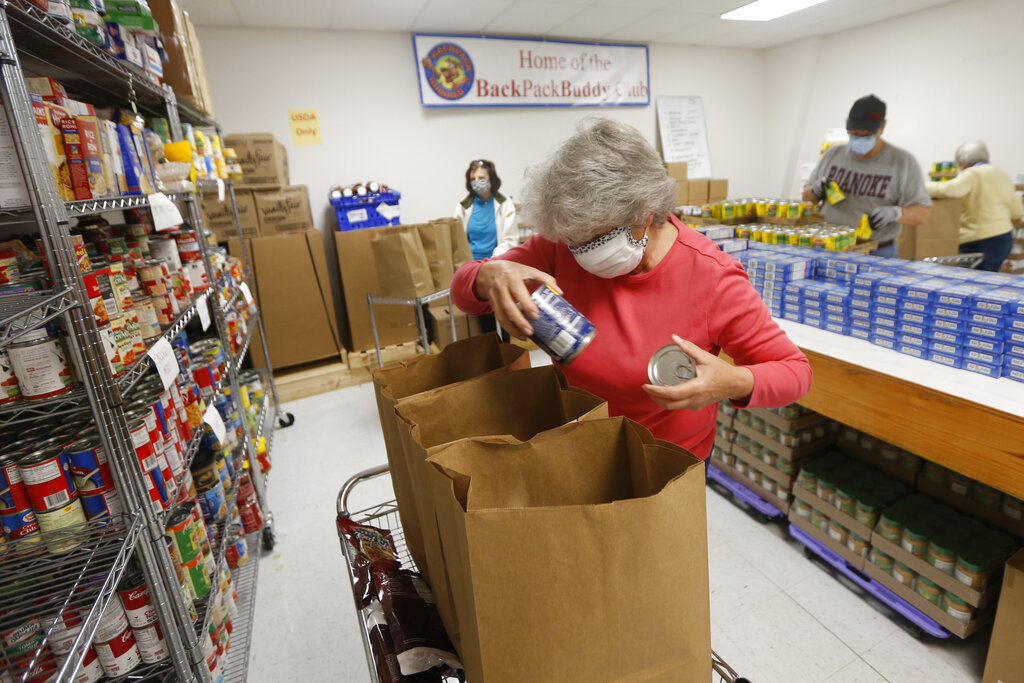Of the many heartbreaking stories I’ve read or heard during this ghastly pandemic, one stands out as especially distressing, almost criminal. The headline, on Page 1 of The Times on April 12, read: “Empty Shelves, But Farms Put Food to Waste — Milk, Eggs and Produce Buried and Dumped.”
That day I was researching food insecurity and soaring rates of metabolic disease as an often overlooked reason for the high risk of Covid-related illness and death among African-Americans, Hispanics and people in poor communities.
The article told of staggering food waste — tens of millions of pounds of fresh food, including 3.7 million gallons of milk a day, that farmers cannot sell because restaurants, hotels and schools were closed in a belated effort to squelch the pandemic.
Some of the surplus food was donated to food banks and feeding programs that have been overwhelmed by demands to nourish the needy but have limited ability to store and distribute perishable food.
Despite our nation’s ability to produce so much healthful food, fewer than one American adult in five is metabolically healthy, Dr Dariush Mozaffarian, dean of the Freidman School of Nutrition Science and Policy at Tufts University, had told me the week before.
He cited a recent national report describing poor diet as “now the leading cause of poor health in the US” and the cause of more than half a million deaths per year.
Dr Mozaffarian explained that poor metabolic health was the immunity-impairing factor underlying cardiovascular disease, Type 2 diabetes and obesity-related cancers that left so many nutritionally compromised Americans especially vulnerable to the lethal coronavirus now all but paralysing the country.
“Only 12 per cent of Americans are without high blood pressure, high cholesterol, diabetes or pre-diabetes,” he said in an interview last week. “The statistics are horrifying, but unlike Covid they happened gradually enough that people just shrugged their shoulders. However, beyond age, these are the biggest risk factors for illness and death from Covid-19.”
The characteristics of what doctors call the metabolic syndrome — excess fat around the middle, hypertension, high blood sugar, high triglycerides and a poor cholesterol profile — suppress the immune system and increase the risk of infections. They’re all associated with low-grade, body-wide inflammation, Dr Mozaffarian explained, “and Covid kills by causing an overwhelming inflammatory response that disables the body’s ability to fight off pathogens.”
Alas, the metabolic well-being of many Americans is now further endangered by currently advised limits on shopping trips, an increased reliance on canned and packaged foods high in fat, sugar and salt, and emotional distress that prompts some people to turn to nutritionally questionable “comfort foods”.
The Covid pandemic has cast a glaring light on longstanding costly and life-threatening inequities in American society. Those living in economically challenged communities, and especially people of colour, are bearing the heaviest burden of Covid-19 infections.
But while diet-related disorders increase vulnerability to the virus, limited national attention has been paid to lack of access to nutritionally wholesome foods that can sustain metabolic health and support a vigorous immune system.
Clearly, when this pandemic subsides, a lot more attention to the American diet will be needed to ward off future medical, economic and social calamities from whatever pathogen next comes down the pike.
The report Dr Mozaffarian cited, issued in March in honour of the 50th anniversary of the White House Conference on Food, Nutrition and Health, was unexpectedly timely. It pointed out that “severe malnutrition has largely been replaced with food insecurity — the limited or uncertain availability of nutritionally adequate and safe foods and beverages,” a circumstance that in 2018 affected 14.3 million American households.
The government spends about $70 billion a year to support food insecure individuals and families through the Supplemental Nutrition Assistance Programme (SNAP, formerly called food stamps). But other than disallowing purchases of alcohol, tobacco, pet foods, hot prepared foods and foods eaten in the store, SNAP does not restrict the kinds of foods people can buy with their state-issued allowance.
Rather than limiting peoples’ food choices with SNAP dollars, experts are devising programmes that can prompt people to choose foods and beverages that can enhance, rather than impair, their health. For example, under an expanded version of SNAP, in some states recipients who use the supplement to buy foods like fruits, vegetables and whole grains get $1.30 on the dollar. But under a proposed disincentive, if the benefit were spent on sodas and snacks, they would get only 70 cents on the dollar.
Last spring, Dr Mozaffarian and colleagues published a brief report headlined “Food Is Medicine — The Promise and Challenges of Integrating Food and Nutrition Into Health Care” in JAMA Internal Medicine.
Touting the benefits of providing free medically tailored meals to food-insecure patients and their families, they noted that diet-related diseases lead to “suboptimal school and work performance.” In other words, consuming a more wholesome diet is a win-win investment.

